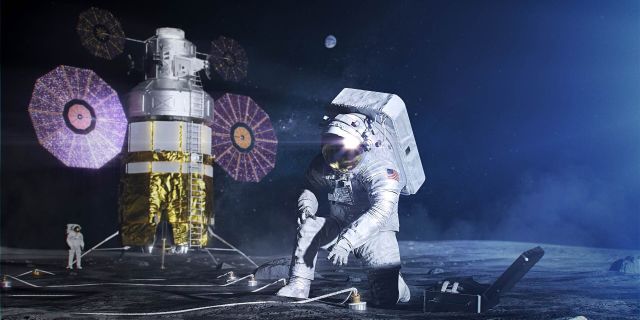Nautilus: people will be able to live on the moonAfter 10-20 years, the moon will turn into a promising place, and research will gain momentum, the author of Nautilus believes.
It will be the starting point before the exploration of other planets.
The question is answered by an astrophysicist from Johns Hopkins University, Joseph SilkBrian Gallagher
Why not?
If one day we decide to leave Earth, we will have to start somewhere. And the only real option is the Moon, where researchers, businessmen and scientists will go first. This will be the starting point before exploring other planets, because due to the low gravity, the lunar environment is more convenient for Earth in terms of sending spacecraft.
If your interest is commercial, then you will probably focus on mining, because the Earth is running out of some rare earth elements that are critical for the production of computer equipment. There are extremely many of them on the moon thanks to billions of years of meteorite bombardment. Do not forget about space tourism. There are already tickets on sale — not cheap, of course — for a trip around the moon, and people like Elon Musk will make it possible in the next five years. Also, everyone knows that at the bottom of deep and dark lunar craters there is a huge amount of water ice, which will give us not only the main resource for life, but also oxygen and hydrogen separately. Their liquefaction with the help of solar energy will give us rocket fuel to travel throughout the Solar System and beyond.
Personally, the Moon attracts me as a place to build telescopes to see the stars really clearly, without darkening. Water vapor in the Earth's atmosphere masks most of the infrared radiation of stars, which contains a huge amount of information about what they are made of. In addition, the Earth's ionosphere interferes with the reception of low-frequency radio waves in space, and on the Moon we will be able to see the Universe in a completely different light.
The only way to capture these objects is with a huge telescope, much larger than the six—meter James Webb. The most suitable place for these purposes is the craters on the far side of the Moon, where you can install one megatelescope or many small ones working coherently. The size of the telescope determines the degree of concentration of light rays, and on the Moon this possibility is hundreds of times higher.
What will a telescope with a diameter of several kilometers give us? This is the most amazing thing I can imagine, thanks to both the concentration of light rays and the resolution. It will be possible to imagine the exoplanets closest to us as accurately as possible and find out if they have oceans or, say, forests – the main factors for the study of distant, alien life. I strongly doubt that life will be found somewhere in our Solar system. We need to look much further, many light-years away. And giant lunar telescopes will help us in this.
People who will work on the moon will first of all have to understand how to create a biosphere. Alternatively, it can be placed inside some artificial structure on the surface of the satellite, but the size will be limited. The option of using some giant lava tube looks much more promising, which, again, is really feasible in the coming decades. These caves, remnants of ancient volcanic activity, are large enough to accommodate an entire city. Imagine that they will be sealed and create an atmosphere inside for life, work and research that cannot be carried out on Earth.
This optimistic scenario implies the participation of a large number of people living and working on the moon — not millions, of course, but at least thousands. First of all, the international community will need to recognize that the only way to the future is cooperation, and only then establish lunar laws to control real estate and suppress criminal activity in case people dispute territories. I really hope that we have the appropriate legal framework. At the moment it seems that we are still far from all of the above, but sooner or later it will happen. After 10-20 years, the moon will turn into a promising place, and research will gain momentum.

